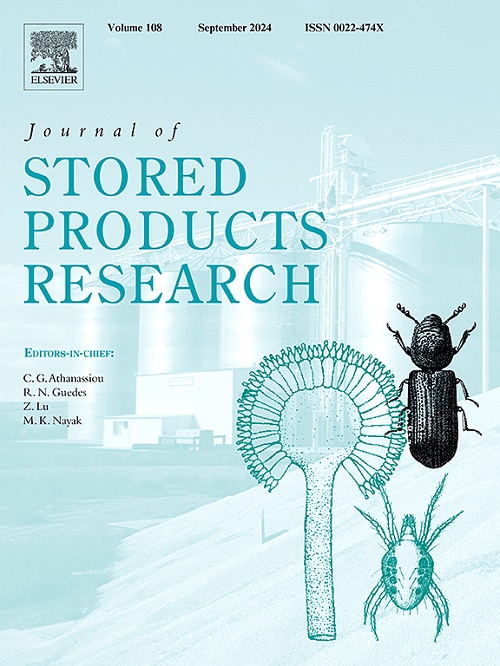Oxidative stability and colour changes of fat- and sugar-reduced wafer creams during the storage
IF 2.7
2区 农林科学
Q1 ENTOMOLOGY
引用次数: 0
Abstract
Consumers are becoming increasingly focused on the quality and nutritional value of their food, particularly in their efforts to combat obesity by reducing sugar and fat content in food products. Newly developed products must therefore undergo thorough evaluation, including storage tests, to confirm their commercial shelf life. The purpose of this research was to examine the effect of reformulation, and specifically, the reduction of fat and sugar content and the addition of 0.1 % natural fruit extract on the quality of wafer creams in a real-time experiment over 13 months of storage. The resulting oxidation induction time (OIT) values showed that reformulation involving fat reduction and fruit extract addition significantly improved the stability of the cream until the final month of storage. This was attributed to the high antioxidant activity of vanillic acid, chrysin, catechin, and pinobanksin, which were found in substantial amounts in the fruit extract powder (a total of 5470.40 μg/g). In contrast, samples with a reduced sugar content exhibited quality parameters similar to those of the control sample, except for colour differences (ΔE), where the highest values were observed. The addition of fruit extract to the wafer cream enhanced the oxidative stability of the lipid fraction, allowing for an extended shelf life without compromising the quality of the wafer fillings.

脱脂和降糖威化奶油在贮存过程中的氧化稳定性和颜色变化
消费者越来越关注食品的质量和营养价值,特别是在通过减少食品中的糖和脂肪含量来对抗肥胖的努力中。因此,新开发的产品必须经过全面的评估,包括储存测试,以确认其商业保质期。本研究的目的是通过13个月的实时实验,检验重新配方对威化奶油质量的影响,特别是减少脂肪和糖含量以及添加0.1%的天然水果提取物对威化奶油质量的影响。由此得出的氧化诱导时间(OIT)值表明,重新配方包括脂肪减少和水果提取物的添加显著提高了奶油的稳定性,直到最后一个月的储存。这是由于水果提取物粉末中含有大量的香草酸、菊花素、儿茶素和pinobanksin(共5470.40 μg/g),具有很高的抗氧化活性。相比之下,含有还原糖含量的样品显示出与对照样品相似的质量参数,除了颜色差异(ΔE),其中观察到的值最高。在威化奶油中加入水果提取物增强了脂质部分的氧化稳定性,从而延长了货架寿命,同时又不影响威化奶油的质量。
本文章由计算机程序翻译,如有差异,请以英文原文为准。
求助全文
约1分钟内获得全文
求助全文
来源期刊
CiteScore
5.70
自引率
18.50%
发文量
112
审稿时长
45 days
期刊介绍:
The Journal of Stored Products Research provides an international medium for the publication of both reviews and original results from laboratory and field studies on the preservation and safety of stored products, notably food stocks, covering storage-related problems from the producer through the supply chain to the consumer. Stored products are characterised by having relatively low moisture content and include raw and semi-processed foods, animal feedstuffs, and a range of other durable items, including materials such as clothing or museum artefacts.

 求助内容:
求助内容: 应助结果提醒方式:
应助结果提醒方式:


